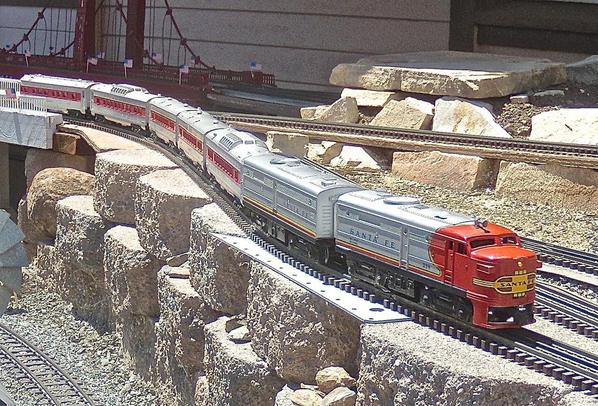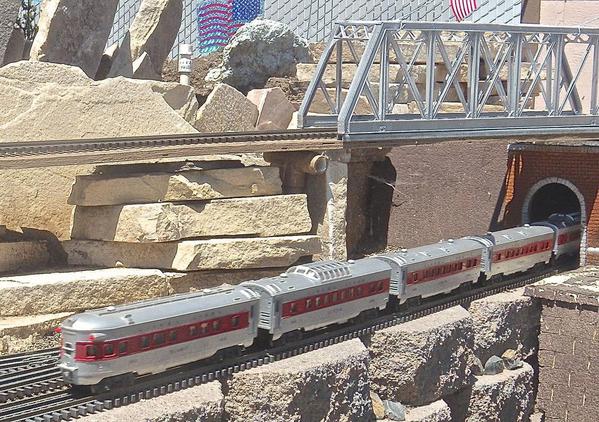The short answer is yes, but in ways that vary for us all (as evidenced by many of the above posts).
To me a engine that doesn't work is not worth anything(especially a very recent one that has everything packed in so tight that you can't even look for obvious loose wires without cutting open a huge wire bundle to look). I'm not looking to go to the effort (or expense if I was to pay someone to do it) of gutting an engine and buying an upgrade (or downgrade, depending what failed) kit just to get it working.
I've bought a fair number of relatively modern items (Legacy, probably a small number of PS3 as well, many PS2 and many of the various eras of TMCC and a handful of PS1).
As stated by at least one or 2 members above, the reliability has gone too far down with the introduction of all the new features (or different manufacturing methods, factories used, etc - my personal belief is the noticeable change started around 2009 or so).
While I have newer items, I realize I better make sure they work when I buy them or risk finding out it's dead when I eventually get around to doing so. It floors me when I hear someone discuss a very new train that they left it in the box for 6 months (or longer!) before trying it out. It's not a bottle of wine that gets better with age! 
I have more confidence in some of the older electronics, and while not necessarily easy to repair at at the board level, it's a heck of a lot easier to deal with some of the dis-assembly of older trains, and the electronics seem to be robust enough that they can take some mild abuse before totally dying. I'm starting to feel comfortable with trading that simplicity for the latest big detailing achievement.
Several years ago (maybe 4 or 5 now?) I voluntarily purchased a MTH West Virginia Pulp and Paper Shay from 1997 (which has PS1). I was always a fan of that engine(and to the best of my knowledge, it has never been re-released with newer electronics), but it came out right when I was fresh out of school, so I was not buying too many (any) $1000+ engines at the time.
I was plenty nervous about the electronics knowing it was PS1, but I lucked out and they have worked flawlessly since I bought it. I probably paid just about half of original retail, which to hear the PS1 malaise tossed around here, I will be called a fool right away.
"Upgrading" this particular engine would destroy the PS1 lumber yard sound effects/operational package. I am fine running it as designed without TMCC or DCS remote control. (I do not believe you will see too many functional models of this particular engine go for "pennies on the dollar" like people keep claiming is normal).
Another example is I recently purchased a PWC Canadian Pacific passenger set that I have always admired, being a modern representation of the post war original. This is a 1999 era TMCC engine in this set (no cruise control, no 200 speed steps, etc). I paid probably 2/3 of original list price for a unit with a sealed inner box (master carton had been opened, but plastic was still around the set box). I can hear the cries now of what an idiot I must be because I could have bought a Conventional Classics set and added 3rd party TMCC board and spent probably a few hundred less. That's not what I was interested in though.
After opening the set and it's inner boxes, I am confident I am the first to do so. While I have not done a 100% visual inspection yet, I have pretty good confidence the condition will be acceptable to me in terms of not being significantly defective. I obviously will have to do some minor dis assembly to re-lube gears and such, but I am confident I will be able to do so without risking any damage to the unit. My confidence in this relatively early TMCC package is also relatively high that it will probably function right with no serious issues. On both fronts, my confidence in a newer item would not be as high.
I like the idea of grading for operation, but it brings challenges as many have mentioned above. I' don't believe it's possible to grade on each specific item since the features are so diverse (and growing every once in a while) and not the same for each engine/manufacturer.
So in summary, yes on electronics, but I'm not terribly concerned about them being the latest versions. I still am OK with even having a conventional item run around my tracks sometimes (like MPC units that I would not bother upgrading). So it's not "all or nothing" for me with Command Control. I don't do Post War though, primarily because I am very fussy on condition and PW trains are obviously still not affordable when they are flawless physically(if a flawless model can even be found).
-Dave










